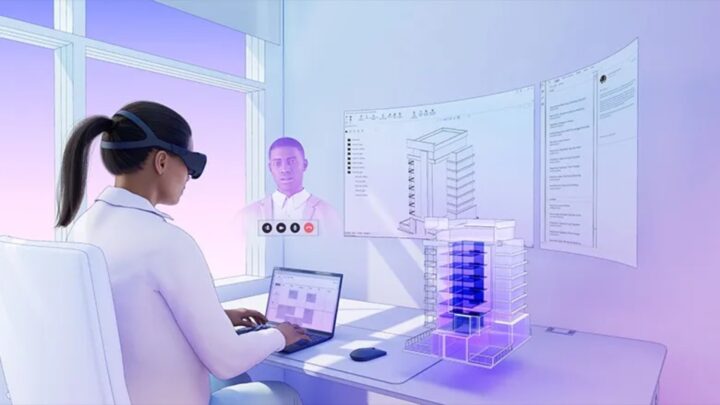
Navigating the world of online beauty shopping is no easy task; finding the perfect shade or the right product can often feel like searching for a needle in a haystack. Recognizing the need for a more streamlined and personalized experience, beauty brands have started enhancing their shopping experiences with Augmented Reality (AR).
Imagine navigating through an online beauty store, clicking on a lipstick shade, and trying it on—virtually, of course—right on your mobile browser. Shoppers can now virtually try on hair color and access augmented reality beauty tools on mobile browsers. For brands, these advancements provide a unique opportunity to promote their products with AR Beauty ads. This new way of shopping not only simplifies the process but also adds a touch of fun and excitement to the online beauty shopping experience.
If you’re intrigued by how AR has been subtly reshaping your online shopping experiences, you’re not alone. Over the past three years, AR has made its mark on the beauty industry, offering a tactile dimension to an otherwise flat online shopping experience.
Selling beauty products using Augmented Reality
If you are wondering how this works, AR beauty tools operate on a simple yet effective principle: they allow shoppers to preview products on their own visage, virtually. This significantly minimizes the chances of making a purchase you later regret. The technology has evolved to offer new categories for virtual try-ons, such as hair color and foundation, and the great news is that these features are now available on mobile browsers.
Other articles we have written that you may find of interest on the subject of augmented reality AR :
For the beauty aficionados among you, the adoption of AR tools for testing out hair colors has been an especially noteworthy development. Brands like L’Oreal, Splat, and Revlon offer this unique feature, enabling you to sample various shades without the commitment of actually dyeing your hair. It’s like having a coloring book but for your hair, where the crayons are shades from a spectrum of choices.
AR tools vs traditional e-commerce
AR-Enabled Platforms
- Personalized Experience: Consumers can virtually try on products, enhancing engagement and confidence in purchases.
- Reduced Guesswork: Virtual try-ons help consumers visualize how products will look on them, reducing uncertainty.
- Increased Engagement: Interactive AR features can lead to more time spent on the website or app.
- Higher Conversion Rates: Consumer confidence in how a product will look can lead to higher sales.
- Expanded Reach: Features available on mobile browsers capture a broad audience.
- Versatility: Multiple product types can be tried on virtually, from makeup to hair color.
- Interactive Advertising: Dynamic AR ads can engage consumers more deeply than static ads.
- Real-time Feedback: Immediate visualization allows for quick, real-time decision-making.
- Broad Adoption: With many brands using AR, consumers may come to expect these features.
- Reduced Return Rates: Better visualization can lead to more accurate purchases and fewer returns.
- Data Collection: Interactions with AR features provide valuable consumer insights.
Traditional 2D Websites
- Static Experience: Consumers rely on 2D images and descriptions, which may not fully represent the product.
- Increased Guesswork: Without trying on products, consumers have to rely on potentially misleading or unclear images and descriptions.
- Lower Engagement: The static nature of traditional 2D interfaces might result in less time spent on the website.
- Lower Conversion Rates: Uncertainty about how a product will look or feel could result in hesitancy to purchase.
- Limited Reach: Features are generally accessible only from a desktop browser, potentially missing out on mobile shoppers.
- Limited Versatility: Fewer types of interactive experiences mean fewer ways to showcase a product’s attributes.
- Static Advertising: Traditional formats like banner ads or image sliders are less interactive.
- Delayed Feedback: Consumers have to wait until the product arrives to actually try it on, affecting decision-making.
- Narrow Adoption: Fewer interactive features mean less differentiation between brands.
- Higher Return Rates: Misjudgment based on 2D images could lead to more frequent product returns.
- Limited Data Collection: Fewer interactive elements mean less data on consumer engagement and preferences.
If you are more into makeup, you will be pleased to know that the ability to virtually sample foundation is not lagging behind. This feature offers a chance to view how a particular shade of foundation appears on an impressive and diverse range of 148 models. Alternatively, you can also see how it will look on you by using the try-on-yourself feature.
On the technical side, the extension of AR features to mobile web browsers taps into the upward trend of mobile shopping. While previously one might have needed a dedicated application for such AR functionalities, you can now access these features right through your smartphone’s browser.
The scope of AR extends beyond individual consumer use to offer a robust platform for brands as well. AR advertising is providing companies with an interactive medium to engage with their potential customers. Instead of traditional static images, brands can offer an interactive ad that invites you to virtually try on the product featured.
Among the key points to consider:
- Virtual try-ons are available for a variety of beauty products including hair color, foundation, and soon lip and eye makeup.
- More than 50 brands, both established and new, have incorporated AR into their online shopping experience.
- Data providers like PulpoAR and Perfect Corp contribute AR assets, broadening the scope and versatility of AR features in the beauty industry.
The impact of AR technology on consumer behavior is rather striking. For instance, interactions with AR beauty tools on platforms like Google result in increased user engagement. Customers are more likely to delve deeper into the brand’s product line and even take decisive actions such as making a purchase.
AR in the beauty sector is a mutually beneficial advancement for both consumers and brands. It enhances your shopping experience by making it interactive and personalized. At the same time, it allows brands to engage their customers in a novel and meaningful way. As the technology continues to evolve, its role in reshaping the online beauty industry is becoming increasingly significant.
Filed Under: Technology News, Top News
Latest timeswonderful Deals
Disclosure: Some of our articles include affiliate links. If you buy something through one of these links, timeswonderful may earn an affiliate commission. Learn about our Disclosure Policy.




